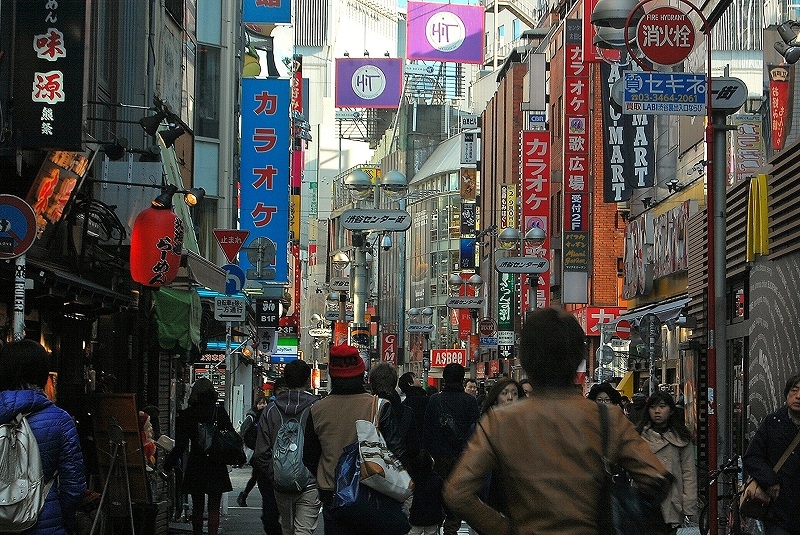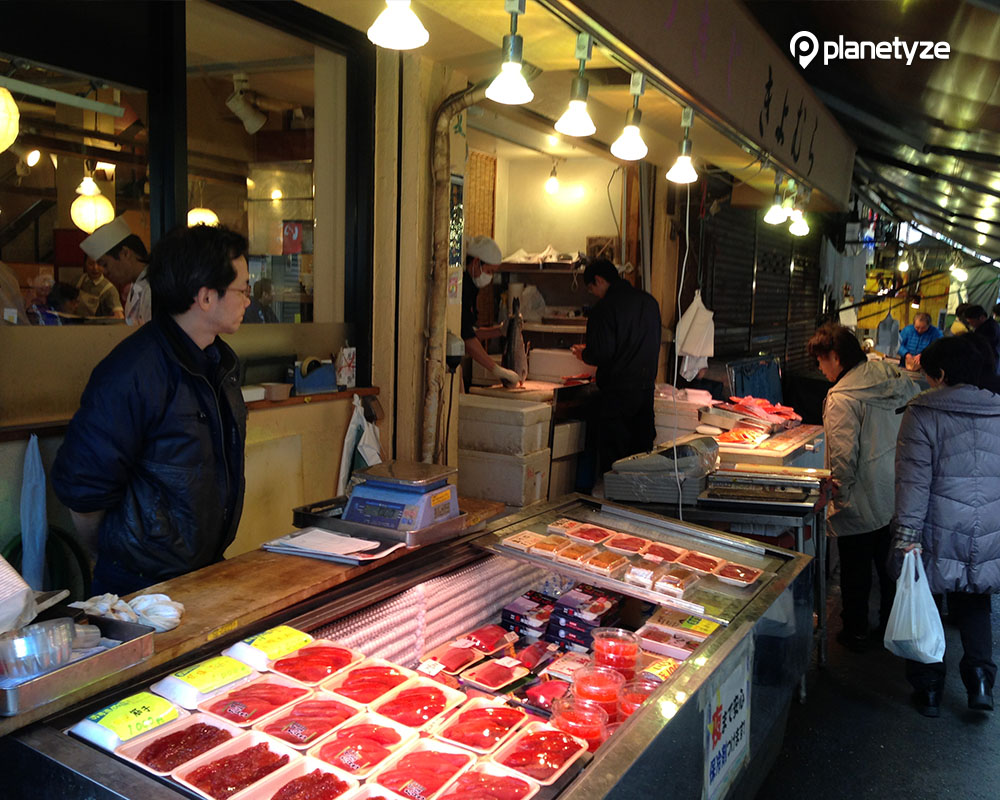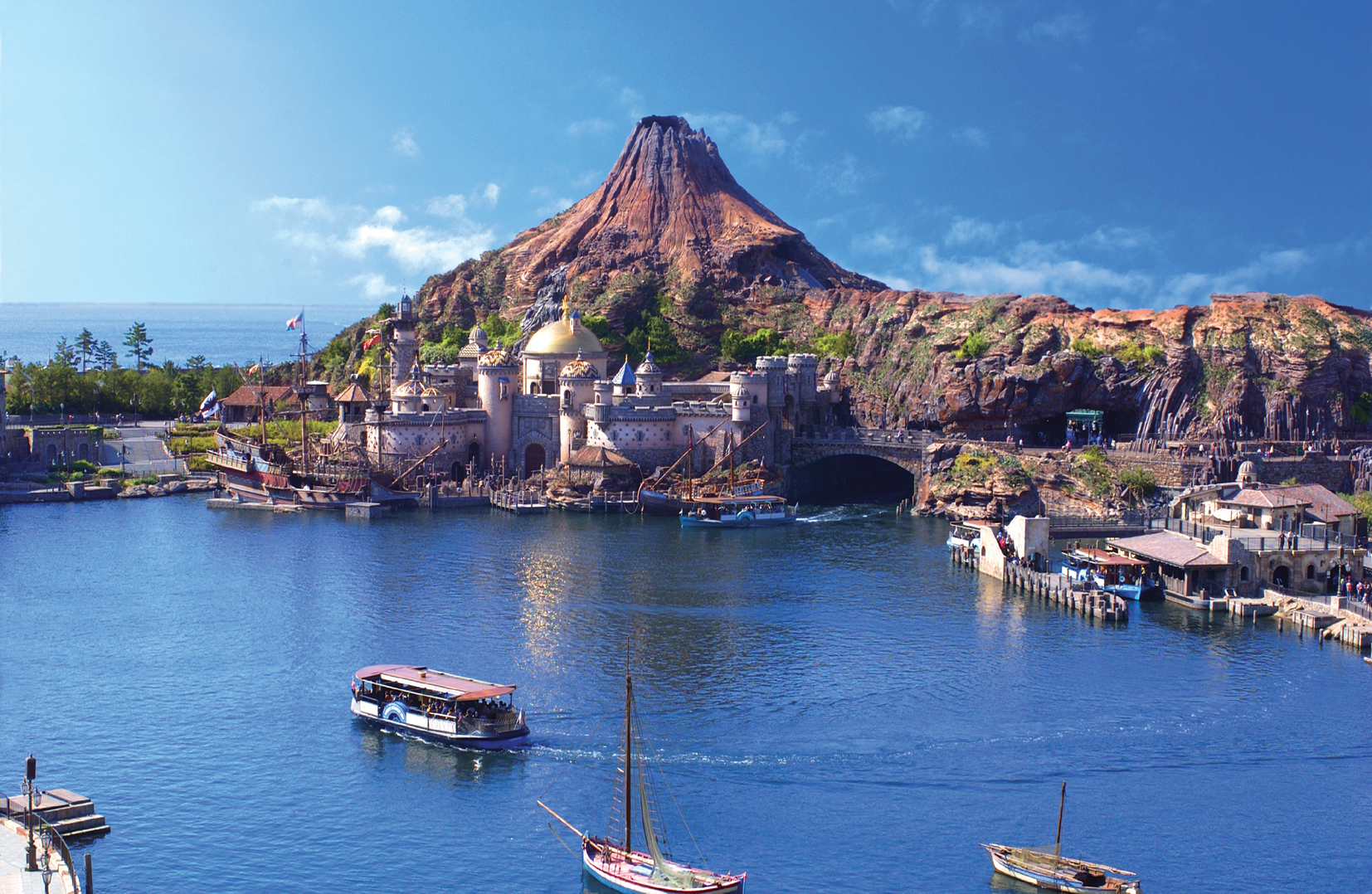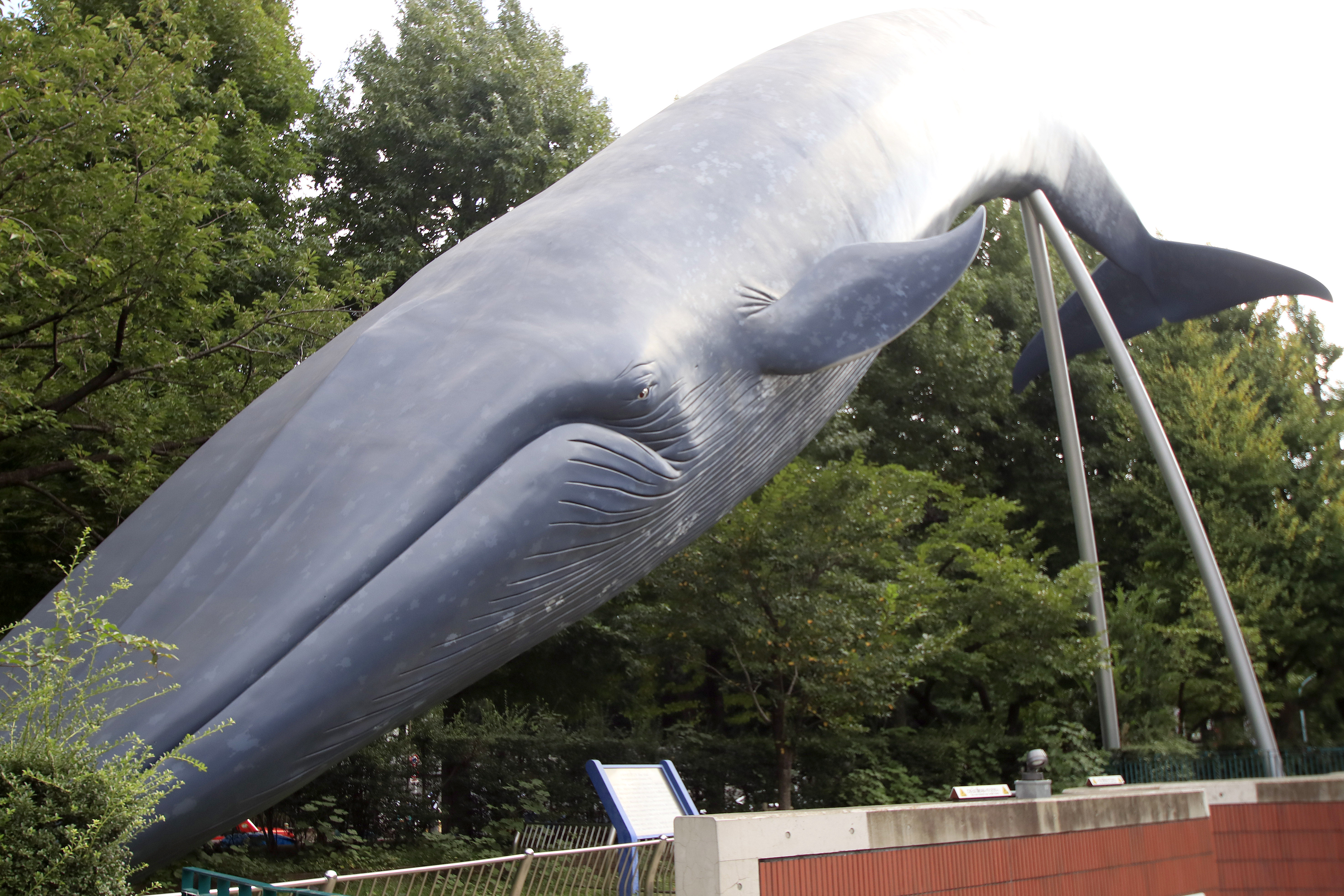Tokyo is Japan’s busy capital where the ultramodern and traditional come together, from neon-lit skyscrapers to historic temples, this is a city that has it all. The opulent Meiji Jingu shrine is known for its towering gate and surrounding trees. The Imperial Palace sits amid large public gardens and the many museums offer exhibits ranging from classical art to samurai swords. Below is a list of the top 20 must see sights in Tokyo.
1. Shibuya Crossing
The crossing in front of Shibuya Station is a landmark of the area where 3000 people cross en masse at one time on weekends
Shibuya is the neighborhood where fashion buildings stand close to each other and advertisements are shown on giant LCD screens. The main intersection has groups of 3000 people cross simultaneously on the weekends.
Shibuya is the youth mecca. And there is a scramble crossing right in front of the entrance that is Shibuya Station. In front of your eyes, a huge LCD screen soars on which ads endlessly get shown. Surrounding you are fashion buildings, CD shops and other structures that symbolize youth culture, along with the many garish signboards standing about, and the pop songs or commercials that keep getting played; all of these make up a vista that is characteristic of Shibuya. Shibuya Crossing in front of Shibu...
2. Omotesando

A trendy area. A neighborhood where you can encounter cutting-edge fashion and various other items
A sophisticated sense of high class engulfs the pedestrians walking there. From the main street to the back streets, there is a variety of shops. Even walking through the back alleys brings an air of celebrity
How did Omotesando develop into a trendy area? Its origins lay in the opening of an avenue leading to Meiji-Jingu Shrine in 1920. There are a number of reasons behind its birth as a trendy area. One reason is the appearance of the Doujunkai Aoyama Apartments where high-ranking officials and people of culture had resided and the Washington Heights (the facility that housed GHQ officers) that was constructed after the 2nd World War. The Washington Heights was then opened as the Athletes’ Village at the 1964 Tokyo Olympics, and for other reas...
Website
www.gotokyo.org
3. The Kanda Festival

The venerable Kanda Festival under the patronage of the Tokugawa shoguns is a celebration representative of not only Tokyo, but also of Japan
Peerless in both The Three Great Festivals of Japan and The Three Great Festivals of Edo, the Kanda Festival boasts a 1300-year history. The festival which is the pride of any Edokko (true Tokyoite) not only includes the highlight of mikoshi (portable shrines) but also a parade.
The Kanda Festival is a festival held at Kanda Shrine in the Kanda district of Tokyo. The 1300-year-old shrine was worshipped as the guardian deity for the streets of Edo during the Edo Era, and although the origins of the following festival are unclear, during the turbulent times in the year 1600, Ieyasu Tokugawa made it a standing order to pray for victory daily. When he did achieve victory, he was able to unify the entire nation, and as a result, Kanda Shrine received protection from the Edo sh...
Phone
03-3254-0753
Price
- Free
4. Sensoji Temple
Get an impression of Japanese culture at Sensoji Temple, the oldest temple in Tokyo, and Nakamise-dori with its many shops
Sensoji Temple is Tokyo’s oldest temple and surrounding the main temple is a 5-story pagoda as well as various shops along Nakamise-dori leading up to the temple. The famous Sanja Festival, which snakes its way through the temple grounds, and the Hozuki Festival occur along with other events on a yearly basis at Sensoji Temple.
During the Edo period, Sensoji Temple was used as the main temple of prayer for the Tokugawa shogunate and resultantly, Sensoji Temple flourished in the city of Edo. Asakusa as a whole is representative of this shitamachi (downtown-style) culture during the Edo Period, and Sensoji Temple is the sightseeing spot that represents this history and culture of Asakusa largely due to the number of visitors it receives on a yearly basis. There are over a staggering 30 million worshippers whom visit...
Business hours
- Everyday (6:00 AM ~ 5:00 PM )
Phone
03-3842-0181
Price
- Free
Website
www.senso-ji.jp
5. Tokyo Tower
End your day of Tokyo sightseeing with the remarkable view from Tokyo Tower
Tokyo Tower has around 3 million visitors annually. More than half of the revenue generated by Tokyo Tower is due to its popularity as a tourist spot, and it remains to be a sought-after attraction for sightseers.
Tokyo Tower was built as a radio broadcast tower in 1958, during a point in time when television began to spread throughout Japan. The construction costs of the tower were immense at over 3 billion yen. The tower was built during a time when Tokyo started flourishing economically, and since then, it has become a symbol and landmark for the rapid industrial growth of the city. Although the newly established Tokyo Skytree has garnered much praise and attained popularity due to its futuristic design, Tokyo Tower attr...
Business hours
- Everyday (9:00 AM ~ 10:00 PM )
Phone
03-3433-5111
Price
- Adult: 1600 JPY
- Child: 1000 JPY
Website
www.tokyotower.co.jp
6. Asakusa Samba Carnival
An exciting samba parade with dazzling costumes and impressive dancing
Top teams gathering from all over Japan take part in a genuine samba dance contest competing for top scores. Enjoy this samba carnival which is said to be the largest of its kind in the northern hemisphere.
A competitive parade with a contest filled with energy. Japan’s biggest samba carnival contest takes place on the final Saturday of August in which genuine samba dance teams gather from all over the nation. Originating in 1981, 2016 marks the 35th anniversary. Every year, 500,000 visitors come to see this spectacle which is an Asakusa summer event. The parade contest consists of an S1 league with 9 teams and an S2 league with 11 teams for a total of 20 teams, with the top S1 teams having a total of 150-300 participants. The teams have th...
Price
- Free
7. Shibuya Center Gai

The shopping street for the youth mecca of Shibuya which is just beyond the famous scramble intersection
Center Gai is right by the crossing for Shibuya where the young get together. Along the narrow street, there are stores and signboards attracting youth. Among the crowds and noise, a unique atmosphere is created.
The distinct feeling of Shibuya’s Center Gai is a highlight of touring Tokyo. Going from the plaza where the statue of Hachiko stands in front of JR Shibuya Station and across the scramble intersection, you will find the gateway to Center Gai in the corner. Right at the front of the crossing, there is a huge display screen showing electronic advertising. To the left side of this, there is a road extending off to the west which happens to be Center Gai. You will find it easily since there is an arch at the entrance. Long ago, there...
Price
- Free
Website
en.wikipedia.org
8. Robot Restaurant
An incredible 90-minute experience with robots, tanks and fighters
Robot Restaurant has garnered immense popularity from overseas tourists. Enjoy the world’s only collaboration of robots, dancing and live music.
At the Robot Restaurant in Shinjuku, foreign tourists are just flooding in. Inside, there are also plenty of famous personalities including overseas celebrities. The Robot Restaurant is located in a corner building within the neon streets of Kabukicho, Tokyo’s premier entertainment district for the night life. The total cost for the restaurant was about 100 million dollars which explains its opulent design. The show continues to surprise and impress. The 90-minute show which interweaves robots, dancers a...
Business hours
- Everyday (4:00 PM ~ 11:00 PM )
The basic performance schedule is below
1st show: Doors open at 3:10pm~ Performance begins at 4:00pm~
2nd show: Doors open at 5:00pm~ Performance begins at 5:55pm~
3rd show: Doors open at 7:00pm~ Performance begins at 7:50pm~
4th show: Doors open at 9:00pm~ Performance begins at 9:45pm~
Phone
03-3200-5500
Price
- Adult: 8000 JPY
Meals require a separate charge of 1000 yen
Website
www.shinjuku-robot.com
9. Hamarikyu

A park facing the Tokyo Bay with vestiges of an Edo period shogun’s hunting field
A garden uniquely designed to draw seawater from Tokyo Bay, Hamarikyu was built over a long period of time by successive shoguns of the Edo period. The garden appears dramatically different depending on the time of the day and the season.
During the Edo period (1603 – 1868), feudal lords across Japan had second houses in the capital Edo (present day Tokyo) because they were obliged to be in Edo for certain periods to engage in public services (the sankin-kotai system). They built beautiful gardens for these second houses where they entertained guests. For this reason, much passion was put into these gardens by feudal lords who competed with each other to prove that their clan was the best by creating the...
Business hours
- Everyday (9:00 AM ~ 5:00 PM )
Phone
03-3541-0200
Price
- Adult: 300 JPY
- Child: 0 JPY
Website
teien.tokyo-park.or.jp
10. Odaiba

When it comes to Tokyo’s playground, there is Odaiba. It’s full of highlights from morning to evening!
For a fun-filled time in Tokyo, try Odaiba. From an amusement park and museum to an onsen, auto showroom and other attractions, there is so much to do that it’s difficult to get around in 1 day. It is one large entertainment facility on a huge tract of reclaimed land.
The area is now 18 years old. A long time ago, it functioned as a distribution facility and an industrial site. It gained attention with the opening in 1993 of the Rainbow Bridge, a suspension bridge drawing a 798m smooth streamline over Tokyo Bay. Odaiba continues to put up facilities with the theme of recreation centering on Rainbow Bridge. MEGA WEB is an automobile theme park operated by Toyota. You can check out the showroom and its history. It was renovated in 2013, and the place introduces...
Phone
03-5579-2680
Website
en.wikipedia.org
11. Tsukiji Fish Market

Satisfy your appetite with a delicious meal at Japan’s most famous fish market
Tsukiji, which has recently garnered the attention of many tourists, is the world’s largest fish market. The market not only deals in fresh fish but also fruits and vegetables, and at the outer retail market, you can purchase ingredients and there are a plethora of restaurants which serve fresh fish.
Tsukiji is one of the world’s greatest fish markets in a nation whose fisheries industry is irreplaceable for the Japanese and in a world which has grown to love sushi and sashimi. But it’s not just fish…there are also many restaurants which take care of fruits and vegetables. The peak of this activity and business is also called Tokyo’s kitchen. You can get a close glimpse of things such as the wheeling and dealing between suppliers at the auctions at this commercial facility which has been so...
Business hours
- Monday (9:00 AM ~ 11:00 AM )
- Tuesday (9:00 AM ~ 11:00 AM )
- Thursday (9:00 AM ~ 11:00 AM )
- Friday (9:00 AM ~ 11:00 AM )
- Saturday (9:00 AM ~ 11:00 AM )
Phone
03-3541-2640
Price
- Free
Website
www.tsukiji-market.or.jp
12. Harajuku
Enjoy shopping in the neighborhood where ‘kawaii’ culture began
Harajuku’s Takeshita Street has recently been ranked as the most desired place to visit by visitors to Japan. Harajuku continues to broadcast its distinct fashion responsible for the ‘kawaii’ (cute) sub-culture.
There has been recent data on TripAdvisor that Harajuku’s Takeshita Street is the number one attraction that tourists wish to visit when in Japan.
Feel like you are in Harajuku and see how Harajuku's Takeshita street TRULY is like in this 360º video:
Takeshita Street is Harajuku’s shopping area and the narrow street is dotted with shops selling clothes distinctive of “Harajuku-style”. While the Salon and Lolita styles are some of the most famous style trends in Harajuku, it cannot be so specifically characterized into one particular style. The reason for this is that Harajuku-style fashion is about re-...
Website
www.takeshita-street.com
13. Tokyo DisneySea

Enjoy the world’s only Disney nautical theme park
DisneySea is a theme park which opened within Tokyo Disney Resorts in 2001. It is the first of the world’s Disney resorts to have an oceanic concept.
DisneySea was originally meant to be built in Long Beach, Los Angeles, but the plans were actually realized in the Tokyo area. DisneySea is divided into 7 smaller theme parks. Going off the arcade from the entrance, there is Mediterranean Harbor which expands along a canal, American Waterfront which has the theme of an American port town of the early 20th century, the near-future urban port of Port Discovery, Lost River Delta where you can get a feel of the Caribbean Sea of the 1930’s, the Arabian Coast which was...
Business hours
- Everyday (8:00 AM ~ 10:00 PM )
Dependent on the season so please check the homepage
Phone
0570 -088-632
Price
- Adult: 6900 JPY
- Child: 4500 JPY
Website
www.tokyodisneyresort.jp
14. Tokyo Skytree
An Unbroken View of Tokyo from Japan’s Highest Tower
In 2012, the Tokyo Skytree took the place of Tokyo Tower, which had been serving as Tokyo’s main radio tower since 1958, and has received recognition by the Guinness Book of World Records for its height. Not only does the Tokyo Skytree serve as a radio tower, it is also incredibly popular for the views from its observatory.
Tokyo Skytree was constructed in 2012 and since then, it has become a new symbol for Tokyo. Not only does it serve a functional purpose as a radio tower, but since its opening, it constantly attracts a steady stream of tourists and visitors who seek out the splendid view of Chiba and Mount Fuji on a clear day. The Tokyo Skytree has also garnered attention for its modern design, resembling the structure of a five-story pagoda from ancient Japanese times. Perhaps it is the fact that the masterminds behind the construction of the...
Business hours
- Everyday (8:00 AM ~ 10:00 PM )
Phone
03-5302-3470
Price
- Adult: 2060 JPY
- Child: 930 JPY
Website
www.tokyo-skytree.jp
15. Ueno Park

A park filled with cherry trees where you can enjoy museums, a zoo and boat-riding
Ueno Park, a place also of culture and art where you can see popular art presentations and other exhibitions of note. Not only can you enjoy the turning of the seasons here but you can also tour some important historical buildings.
Experience history as well as culture in nature. What makes Ueno Park special is that it is not just simply a park; you can experience history, science, and culture, and you can also spend time with animals. The park was originally part of the grounds of Kaneiji temple but was designated as one of the earliest public parks in Japan in the Meiji period (1868 – 1912). The park started out mainly as a place for viewing Kaneiji temple, Toshogu shrine and their cherry blossom trees. Subsequently, facilities were built one by one including muse...
Business hours
- Everyday (5:00 AM ~ 11:00 PM )
Phone
03-3828-5644
Website
en.wikipedia.org
16. Yoyogi Park

After shopping in cute and poppy Harajuku, relax in Yoyogi Park.
An urban park that has been loved for years as a daily resting area for Tokyo citizens which holds concerts and many events. If you’re tired of the city’s hustle and bustle, take a break in this huge park.
Taking it easy just like a Tokyoite. Since Yoyogi Park is close to Harajuku Station, getting there after a round of shopping is simple. Take a break there once your shopping in Harajuku is done. You can take it easy just like a resident of Tokyo by walking among the trees or lying down on the fields of grass. It is the perfect park after feeling the everyday of the metropolis. Yoyogi Park was once the parade grounds for the Imperial army, and then following World War II, it was used as the US military barracks known as Washington Height...
Business hours
- Everyday
Phone
03-3485-4090
Price
- Free
Website
en.wikipedia.org
17. Meiji Jingu Shrine
Feel the mystical energy of the Meiji Shrine
Meiji Shrine, located in the Shibuya district in Tokyo, attracts the greatest number of visitors from throughout Japan for hatsumode or the first shrine visit of the New Year. If you happen to be lucky enough on the day of your visit, you could catch a glimpse of a traditional wedding ceremony.
Every New Year’s Day on ‘hatsumode’, Meiji Jingu, which is over 700,000 square meters in size, receives around 3 million worshippers, reflecting its ability to attract the greatest amount of visitors in the nation. Considering the amount of lush greenery located inside the perimeters of Meiji Jingu, it is hard to believe that it is located in the same vicinity as bustling commercial centers such as Harajuku, Omotesando and Shibuya. To reach the shrine from JR Harajuku station is a mere 5 minutes away and one coul...
Watch this 360º VR Video of Meiji Jingu Shrine and feel like you are walking there yourself.
Business hours
- Everyday (6:00 AM ~ 4:00 PM )
from dawn to dusk
Phone
03-3379-9281
Price
- Free
Website
www.meijijingu.or.jp
18. Shinjuku Golden Gai (Golden Street)
Shinjuku’s hole-in-the-wall, with 200 bars and restaurants squeezed into a maze of narrow streets
Golden Gai is a postwar black market and prostitution area that was transformed into a village of watering holes. Tiny shops are packed into the labyrinth of alleys. The dimly-lit neon brings a nostalgic air.
Shinjuku, a neighborhood where you can have fun in various places. Tokyo’s busiest commercial district of Shinjuku is divided into various areas with their own character. There is the shopping area which attracts the young, the area of soaring office skyscrapers and the pleasure area of cabarets and clubs. Among them, on a side street a block away from the boulevard lined with showy buildings and department stores next to Hanazono Shrine at Kabukicho 1-chome lies Shinjuku Golden Gai. When you go past the arched signboard of...
Phone
03-3209-6418
19. Shinjuku Gyoen National Garden

Enjoy nature in the middle of the city at Tokyo’s version of Central Park
The term gyoen refers to a garden for the Imperial family. Only a 10-minute walk from JR Shinjuku Station (South Exit), this quiet and lush garden is loved by many who head there to take a break from the city and indulge in some relaxation.
Shinjuku Gyoen was originally created as a garden specifically for the Imperial family. The Old Western-style Imperial Rest House was build for recreation and guests of the family, and was designated as an Important Cultural Property. Shinjuku Gyoen boasts a size of 58 hectares and consists of 3 types of gardens: English Landscape Garden known for its spacious and flat lawns, French Formal Garden with sycamore trees and Japanese Traditional Garden with a central pond. Cherry blossoms at Shinjuku Gyoen Shinjuku Gyoen...
Business hours
- Tuesday (9:00 AM ~ 4:30 PM )
- Wednesday (9:00 AM ~ 4:30 PM )
- Thursday (9:00 AM ~ 4:30 PM )
- Friday (9:00 AM ~ 4:30 PM )
- Saturday (9:00 AM ~ 4:30 PM )
- Sunday (9:00 AM ~ 4:30 PM )
Last entry 4:00 PM
Phone
03-3350-0151
Price
Adult: 200 JPY
Elementary and Junior high school student: 50 JPY
Infant: Free
20. Roppongi

Feel at home in Roppongi. Get a taste of the extraordinary in an urban artistic space.
Roppongi had that image of a nighttime entertainment quarter for adults, but recently it has changed into a modern area. It has become a place to show Tokyo’s latest art by museums of art that have been going up one by one.
The embassies of every nation dot the surrounding area of Roppongi and there are many stores for foreigners. In the neighborhood, there are also plenty of notable art galleries. Let us introduce three of them with some special characteristics. Mori Art Museum Located on the 53rd floor of the Roppongi Hills Mori Tower. With an eye toward art from Japan and the rest of Asia, it’s a museum focused on modernity and internationality. Exhibitions of the world’s artists under the theme of contempor...